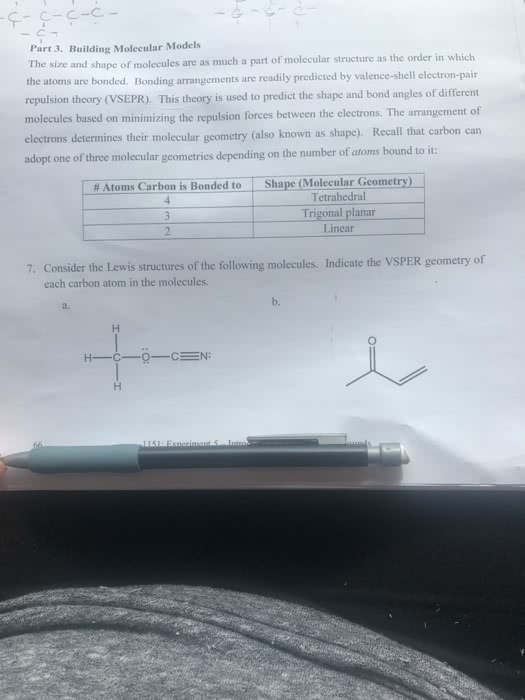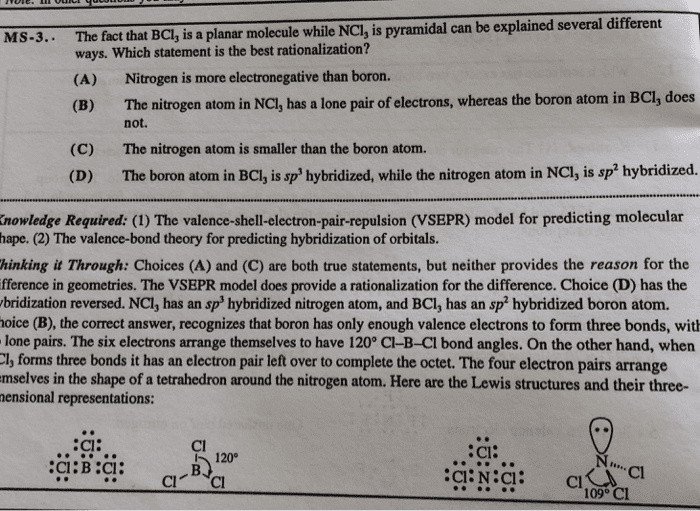CHEM 1030 Lecture Notes - Trigonal Bipyramidal Molecular Geometry, Trigonal Planar Molecular Geometry, Trigonal Pyramidal Molecular Geometry
71 views5 pages
18 Dec 2013
School
Department
Course
Professor

19
CHEM 1030 Full Course Notes
Verified Note
19 documents
Document Summary
Molecular shapes: the shape of a molecule plays an important role in its reactivity, by noting the number of bonding and nonbonding electron pairs we can easily predict the shape of the molecule. Electron domains: we can refer to the electron pairs as electron domains. In a double or triple bond, all electrons shared between those two atoms are on the same side of the central atom; therefore, they count as one electron domain. Valence shell electron pair repulsion theory (vsepr: the best arrangement of a given number of electron domains is the one that minimizes the repulsions among them. Electron-domain geometries: all one must do is count the number of electron domains in the lewis structure, the geometry will be that which corresponds to the number of electron domains. In the linear domain, there is only one molecular geometry: linear.
Get access
Grade+20% off
$8 USD/m$10 USD/m
Billed $96 USD annually

Homework Help
Study Guides
Textbook Solutions
Class Notes
Textbook Notes
Booster Class
40 Verified Answers
Class+
$8 USD/m
Billed $96 USD annually

Homework Help
Study Guides
Textbook Solutions
Class Notes
Textbook Notes
Booster Class
30 Verified Answers
Related textbook solutions
Chemistry: Structure and Properties
2 Edition,
Tro
ISBN: 9780134293936
Basic Chemistry
5 Edition,
Timberlake
ISBN: 9780134138046
Principles of Chemistry Molecular Approach
4th Edition,
Tro
ISBN: 9780134112831
Chemistry: Structure and Properties
2nd Edition,
Tro
ISBN: 9780134293936
Principles of Chemistry Molecular Approach
3rd Edition, 2014
Tro
ISBN: 9780321971944
Chemistry: A Molecular Approach
3rd Edition,
Tro
ISBN: 9780321809247
Chemistry: A Molecular Approach
5th Edition,
Tro
ISBN: 9780134874371
Principles of Chemistry: A Molecular Approach
4th Edition,
Tro
ISBN: 9780134895741
Chemistry: The Central Science
14th Edition, 2017
Brown
ISBN: 9780134414232
























